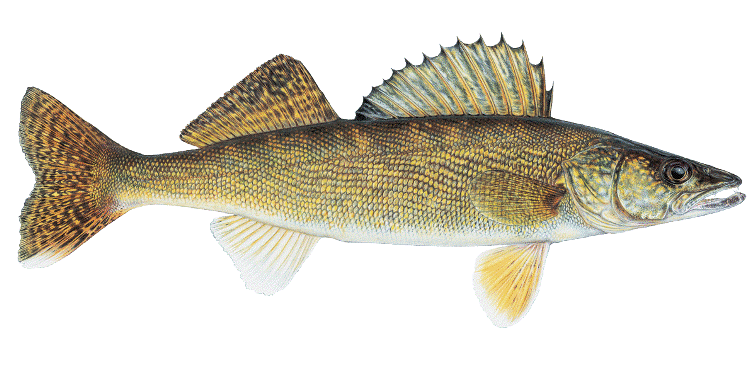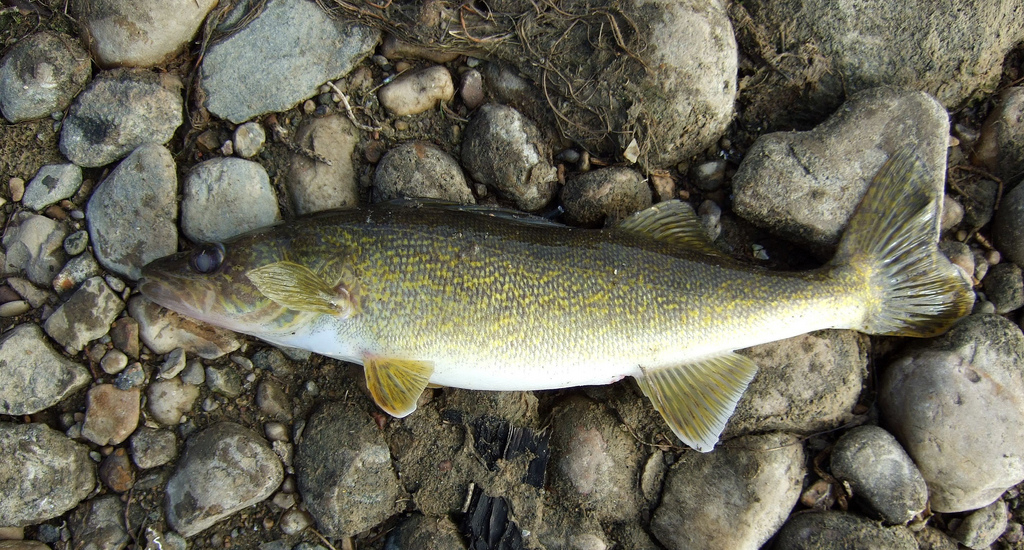
Classification/Description
The scientific
name for Walleye has changed recently from
Stizostedion vitreum to Sander vitreus. The name
has changed due to the fact that the species
Zander's (Stizostedion
lucioperca) genus is so closely related to that of
the walleye that they are practically considered the
same fish now. Since the Zander was documented first, they had to change
the genus for walleye. The genus Sander remained and
that is how the name changed.
-
Kingdom: Animalia
-They belong to this kingdom because they are multicellular, they are heterotrophic and have no cell wall. -
Phylum: Chordata
-They belong to this phylum because they show bilateral symmetry, triploblastic and have a coelom. The 5 unique characteristics that only the phylum chordata possess are notochord, dorsal-tubular nerve chord, pharyngeal pouches, endostyle (thyroid gland), and a post anal tail. -
Class: Actinopterygli
-They belong to this class because they fit the standard of being either ray-finned or spiny rayed fish. -
Order: Perciformes
-They belong to this class because they are perch-like. This means they usually have spines on their fins, have scales with serrated edges, and a tail fin with 17 rays. -
Family: Percidae
-The walleye belong to this family because they posses the characteristics of the family Percidae. These include a dorsal fin that is divided into 2 sections. The front section possess spines and the back section does not. The last characteristic is that the anal fin has 2 spines in front of it. -
Genus: Sander
-They are a member of the perch family (Stizostedion vitreum) and are very closely related.
Walleye belong to the perch family and are closely related to the sauger. On the contrary to popular belief, the walleye is not related to the pike at all. They have many nick names associated with them. Their nick names include:
- Pickerel

- Yellow Pickerel
- Pike-Perch
- Walleye Pike
- Walleyed Pickerel
- Walleyed Pike-Perch
- Yellow Pike
- Yellow Pike-Perch
- Yellow Walleye
Walleye Size
-Most average 1 to 3 pounds & range from 10-18 inches.
-Some walleye can weigh over 10 pounds and range well over 18
inches.
Walleye can range in color from dark olive to a yellow/gold
appearance that fades to white on the belly. Their body
is very streamline and cylindrical. They are named for
their large glossy eyes. The reason for their larger
eyes is the tapetum lucidum, a reflective layer of
pigment, that helps them see their prey even in poor conditions. Another defining aspect of walleye is
they have dark bars that run horizontal down the back
and have dark blotches on their sides. Walleye also have
a mouthful of very prominent teeth that are used to
capture their prey. Learn what
habitat they reside in.
